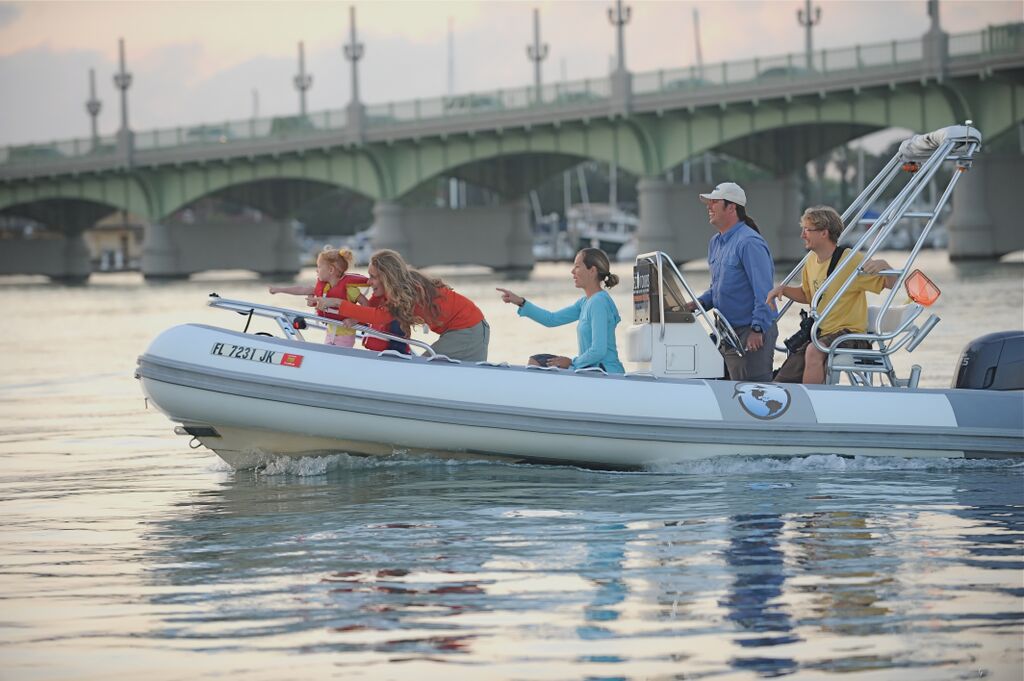
“We are using these animals as ambassadors to tell the story of conservation through education,” said McKenna. Photo provided by St. Augustine Eco Tours.
By Jewell Tomazin | gargoyle@flagler.edu
The manatee is widely known to be an endangered species, but recent signs of recovery could change their status on the Endangered Species List.
The U.S. Fish and Wildlife Service proposed in January to reclassify the West Indian manatee to threatened. The Service said the species no longer qualifies to be listed as endangered “as a result of significant improvements in its population and habitat conditions and reductions in direct threats,” according to a press release on the service’s website. An aerial survey conducted in February by the agency found that there are at least 6,300 manatees in Florida, up from around 1,200 in 1991.
Manatees are federally protected under the Marine Mammal Protection and the Endangered Species acts, and at the state level under Florida’s Marine Sanctuary Act. Enforcement of these environmental laws, as well as other conservation efforts, have helped strengthen populations and habitats. But Katie Tripp, director of science and conservation for the Save the Manatee Club, warns that the fight to protect and conserve manatees is not over. She said that while population growth — a 500 percent increase in 25 years — means conservation efforts are working, manatees still face serious threats, and if they are to continue to flourish, they need even more protection.
“We would like to see the FWS work with conservation groups to plan for manatees’ future,” she said. “We would ask for additional protection for them through environmental laws.”
Manatee Protection Plans focus protection to 13 “key counties” in Florida, where speed restrictions are heightened, and there are more efforts to spread public awareness about manatees. But despite these plans and protections, watercraft strikes kill or injure manatees by the dozens annually, especially during warm weather months. Collisions with watercraft are the most deadly human-related threats, accounting for more than 21 percent of all manatee deaths statewide in 2015, according to the Florida Fish and Wildlife Conservation Commission’s annual manatee mortality report. The 2016 report says that as of March 25 this year, 30 manatees have died from human-related incidents. Watercraft collisions caused 28 of those deaths.
If manatees are downlisted, they will still be protected under the same laws. But Tripp said the downlisting would make it more difficult to set new protection zones and easier to get rid of existing ones.
“Restricted speed zones are put in place because of scientific evidence that says they need to be in place, and they’re taken down because of politics,” she said.
It is perceived that threatened species requires less conservation efforts than endangered species, she said, but reduced efforts could send a threatened species back to the endangered list.
When the warm-weather threat of watercraft strikes subsides, manatees face a different threat: cold stress. Despite their size, manatees do not have enough body fat to defend against the cold. Staying in water below 68 degrees for an extended period of time can be fatal. Finding warm water during winter months is crucial, making it a major concern for the Save the Manatee Club, a nonprofit organization whose mission is to protect the manatee and its habitat.
“What we’re most worried and concerned with is the future security of their warm water habitat,” Tripp said.
Tripp said manatees’ habitats have been changing since the ’40s and ’50s from natural springs to heated water runoff from power plants. She said that the runoff areas themselves provide a safe environment, with no immediate threats. The problem is that the power plants — and the hot water they produce — may not always be around, and depending on a manmade environment is a concern for manatees in the long run.
“Springs are going to be there forever — power plants are not,” Tripp said. “The best plan for the future is to get them into a natural habitat.”
Although the manatee is not a crucial part of the food chain, Tripp said, preserving manatees’ habitat and enforcing and creating environmental laws would impact all species that share that environment — including humans.
“If we protect the springs for manatees, we’re also protecting them for ourselves,” she said. “If we benefit them, we benefit us, as well as all of the animals and plants.”



Be the first to comment on "Despite population growth, manatees still face threats"